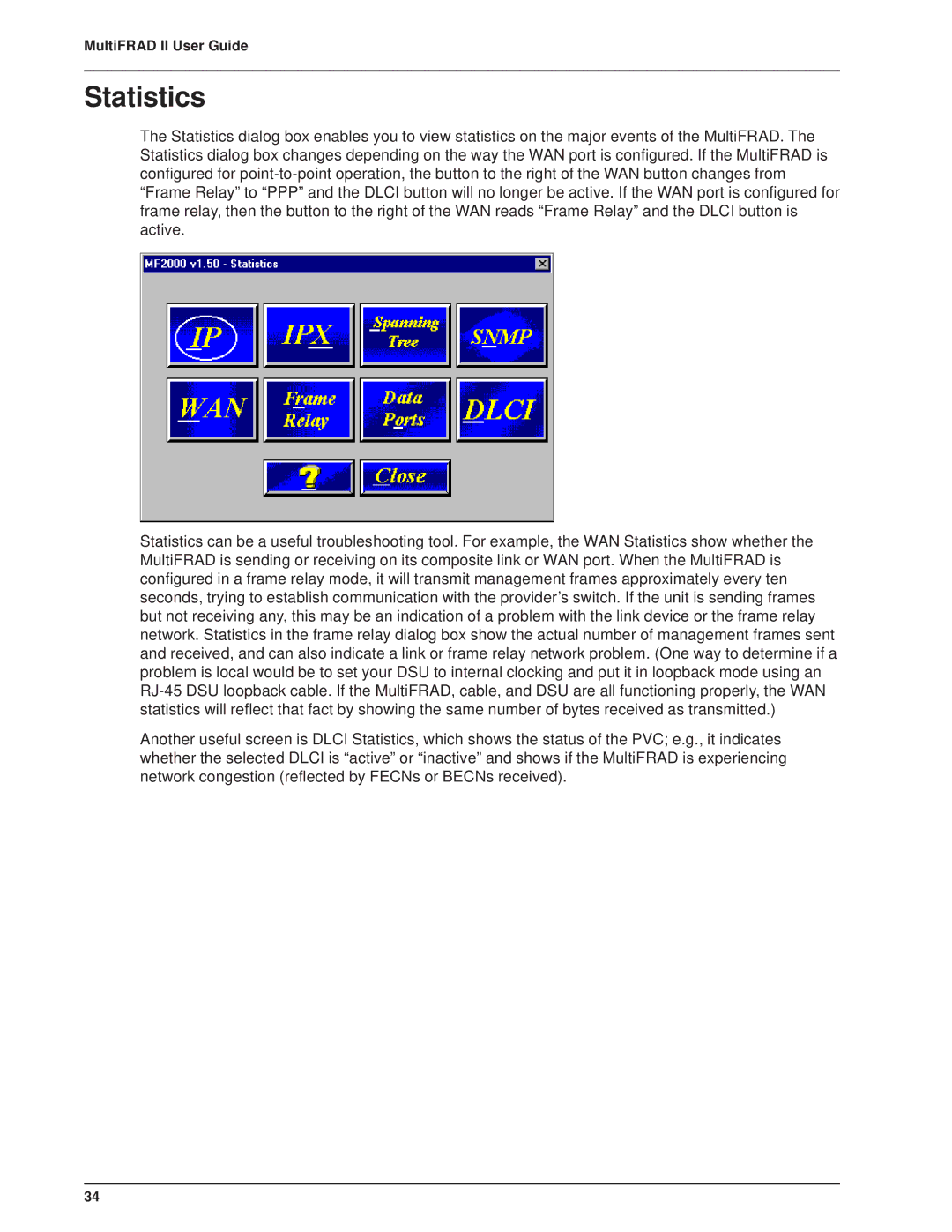
MultiFRAD II User Guide
Statistics
The Statistics dialog box enables you to view statistics on the major events of the MultiFRAD. The Statistics dialog box changes depending on the way the WAN port is configured. If the MultiFRAD is configured for
Statistics can be a useful troubleshooting tool. For example, the WAN Statistics show whether the MultiFRAD is sending or receiving on its composite link or WAN port. When the MultiFRAD is configured in a frame relay mode, it will transmit management frames approximately every ten seconds, trying to establish communication with the provider’s switch. If the unit is sending frames but not receiving any, this may be an indication of a problem with the link device or the frame relay network. Statistics in the frame relay dialog box show the actual number of management frames sent and received, and can also indicate a link or frame relay network problem. (One way to determine if a problem is local would be to set your DSU to internal clocking and put it in loopback mode using an
Another useful screen is DLCI Statistics, which shows the status of the PVC; e.g., it indicates whether the selected DLCI is “active” or “inactive” and shows if the MultiFRAD is experiencing network congestion (reflected by FECNs or BECNs received).
34
